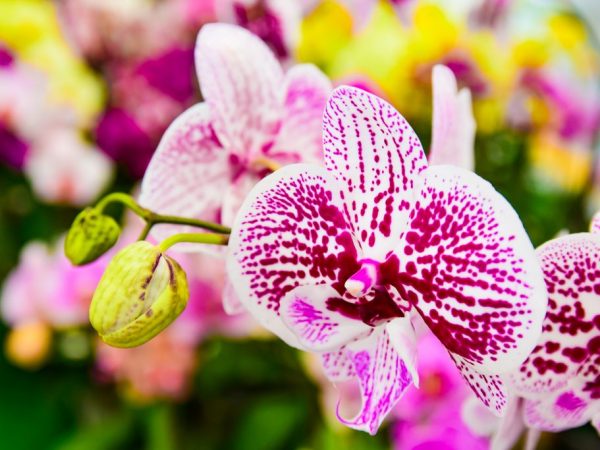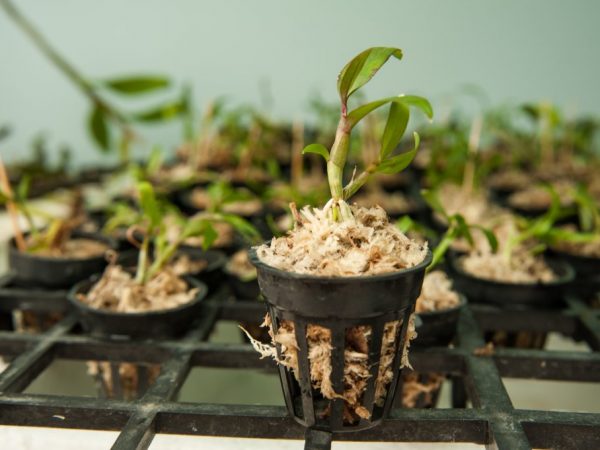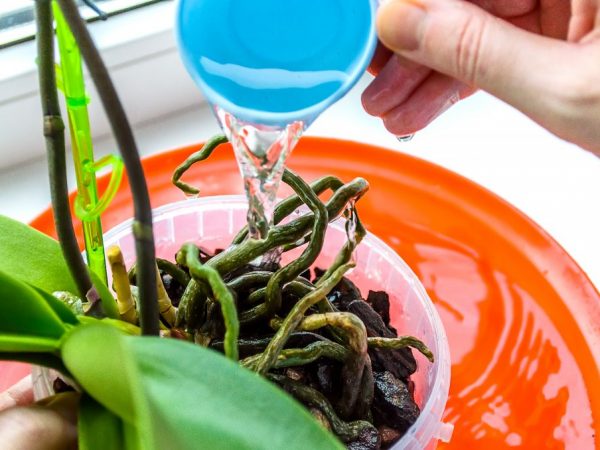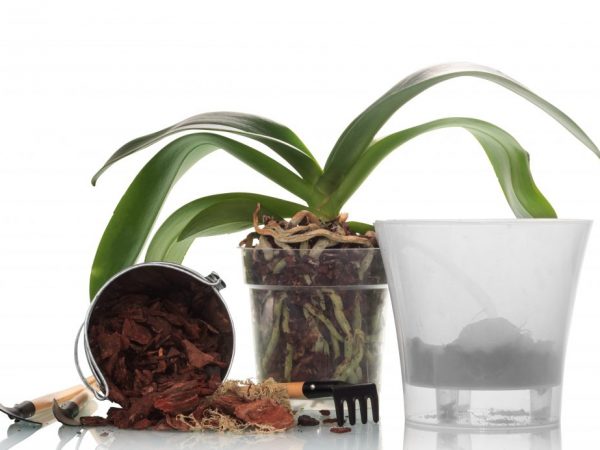Preparation and transplant of a blooming orchid
Among the types of orchids, phalaenopsis is more often transplanted. It opens its buds most of the year. Transplanting an orchid during flowering is a straightforward process. The main thing is to properly prepare the indoor flower for the procedure.

Preparing and replanting a blooming orchid
Transplant reasons
Moving a flower to another pot is carried out when the procedure is urgent and necessary. It cannot be postponed until the flowering period is over, otherwise the plant will die.
It is recommended to transplant a flowering orchid if:
- after purchase on the trunk, damage by pests, diseases was found:
- overgrowth of roots is noted and they do not fit in the pot;
- there are areas of decay on the root system;
- poor quality soil was used;
- the leaves turned yellow and wilted;
- the roots have grown to the inner surface of the pot;
- foliage greatly exceeds the volume of the pot.

Orchid transplant recommendations
Advantages and disadvantages
When deciding to move a flower to a new pot, remember the likelihood of negative consequences. They occur if the transplantation of a flowering orchid at home is not done according to the rules.
After completing the procedure, the phalaenopsis arrows fall off, and the buds dry out. Plants do not bloom in the coming spring. During this period, flowering is reduced. Phalaenopsis is weakened, growth and development stop.
Among the advantages of the procedure are:
- preservation of the affected plant;
- improving the nutrition of the root system;
- active development of the trunk;
- stopping the spread of pests and diseases.
Training
The basic rule before successfully replanting orchids during flowering is to shorten the flower stalks by 2-3 cm. This helps redistribute nutrients from the top to the roots.
The roots develop rapidly and adapt to new conditions. The release of a new peduncle occurs earlier than without cutting off the old one.
Watering
The transplant is easier if the flower is moistened beforehand. The trunk is watered.
For watering, take a vessel larger than the pot. Warm water is poured into it. The flower is kept for 50 minutes.
The work done allows you to reduce the damage to the root system to a minimum. Be sure to carry out the procedure if the flower has developed in a container of clay or other natural materials. Clay vases are smashed and plastic cups are cut open.

The transplant is easier if the flower is moistened beforehand.
Inspection and treatment of roots
The root system is treated with care. Step by step guide:
- The roots are soaked. They are filled with clean water at a temperature of 36 ° C-38 ° C.
- Remove from the container, rinse thoroughly. Dry in the room for 7-8 hours.
- The rhizome is examined for damage. All black and rotten parts are removed with a sharpened knife or garden shears.
The trimming tools are pre-sterilized. They are treated with powdered activated or charcoal.In the absence of a substance, disinfection is carried out with an ordinary pharmaceutical solution of brilliant green or cinnamon powder.
Soil preparation
The substrate can be purchased ready-made. It is chosen taking into account the type and age of the plant that they want to transplant.
Self-made soil at home will be economical and of high quality. Be sure to take into account the properties vital for the plant: high air permeability, average moisture retention.
Drainage is used for the lower layer. It is boiled and dried. Expanded clay is not suitable: it enters into a chemical reaction with water, releasing toxic substances.
Coarse-fractional bark of coniferous trees, fragments of broken bricks, small gravel are used.

Soil preparation for planting
The orchid should be transplanted into the main substrate. It is prepared from:
- medium-sized pieces of pine bark from a dried tree;
- swamp moss (sphagnum);
- scales of pine cones.
Pot selection
They take a new vase for the plant. Choose a transparent glass correctly, as the roots must see daylight. Plastic and glass are suitable materials.
It is recommended to transplant an orchid during flowering into an elongated pot.
Often you need to transplant a blooming orchid due to overgrowth of roots. The length is selected so that the distance from the roots to the bottom of the vase is no more than 5-6 cm. A suitable diameter ー is 3-3.5 cm wider than the previous pot. This size will help keep the root system from overgrowing.
10 minutes before transplanting into another pot, it is poured over with boiling water, disinfected. A dark solution of potassium permanganate is suitable. The container is left to dry.
Transplant technology
It is recommended to start replanting a blooming orchid with laying the drainage. It should not take up more than ⅕ of the pot. The main substrate is poured on top, filling the vase by ⅓.
Next, you should carefully transplant the flower without injuring the root system. Sprinkle the soil in small portions.
Use a wooden stick or fingers to fill the void between the roots. Pour small pieces of bark on top.
At the end, the flower is moved to daylight. Direct sunlight should not fall on it.
Conclusion
Correct transplantation will prevent the flower from shedding all the buds after the procedure. The regrowth of a new arrow occurs in 2-3 months.
It is necessary to draw up an individual schedule for plant watering, fertilizing, spraying. It is important not to water the flower for the first 3-4 days after transplanting.


